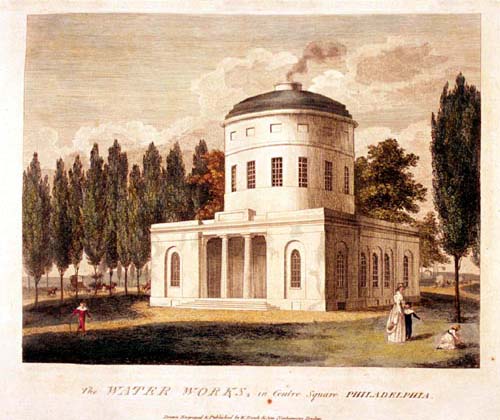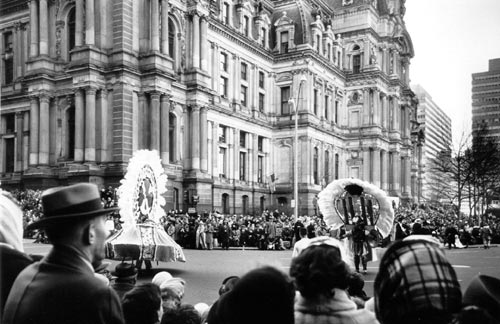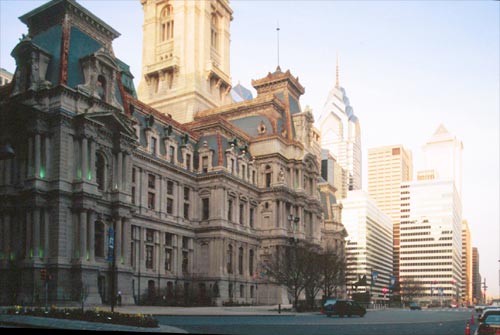Centre Square is one of five squares designated for public use on William Penn's symmetrical grid plan of the city. It lies equidistant from the Delaware and Schuylkill Rivers. Philadelphia is the first American city to be built on a grid plan. Penn envisioned a "green country towne," with large garden plots, that would grow around the square, but instead it fanned out on the western bank of the Delaware River. Plots were subdivided and by 1800, the city was solidly built between the Delaware and Tenth Street. There was only a scattering of structures to the west. The white marble Water Works or Pump House was built 1799-l800 from designs of Benjamin H. Latrobe, used until 1815 and demolished 1827-28. With the aid of a series of pumps water from the Schuylkill River was delivered to tanks in the upper story of the Pump House and then through wooden pipes to subscribers and hydrants in various parts of the city. The engines proved to be inefficient and unreliable. In 1811, Frederick Graff, who was the engineer and superintendent, recommended a new water works having a pumping station on the Schuylkill River to lift water to a reservoir on top of Morris Hill (later called Fairmount, now the site of the Art Museum). It was constructed with a hydraulic system 1812-22 from Graff's designs.
Photographs
Philadelphia's City Hall was constructed in Centre Square l871-81 from designs of John McArthur, Jr., assisted by Thomas U. Walter (designer of the dome and wings of the U.S. Capitol). Alexander Milne Calder supervised the sculpture and executed the thirty-seven foot statue of Penn (put in place on the tower in 1894). On completion, the Hall was the largest masonry structure in the nation. Penn's vision finally came to fruition when the business community began moving westward in the vicinity of City Hall. Penn Center, an urban renewal project between Market Street West and John F. Kennedy Boulevard, was started in the mid 1950s on the former site of the Pennsylvania Railroad's Broad Street Station and elevated tracks known as "the Chinese Wall" (built 1882 and demolished 1954) The 1960 photograph, taken on New Year's Day, shows the first two Penn Center buildings, erected 1955-59 (BG-R) and parading Mummers (FG). Prominent additions to the Market Street West skyline since 1960 seen in the 2000 photograph (BG) are: (L to R) Liberty Place Two, opened 1990 (top only); Arco Towers; the PNC Building; Liberty Place One, completed 1987; the 1601 Market Street Building; and the Mellon-PSFS Center, completed 1990. Liberty Place One was the first to break the so-called "unwritten gentlemen's agreement" that no Philadelphia building would rise above Penn's hat on top of City Hall (Penn, who holds a scroll in his hand, is facing Treaty Tree Park where he is believed to have made the treaty with the Indians, see commentary, Plate 2).
Back Next




